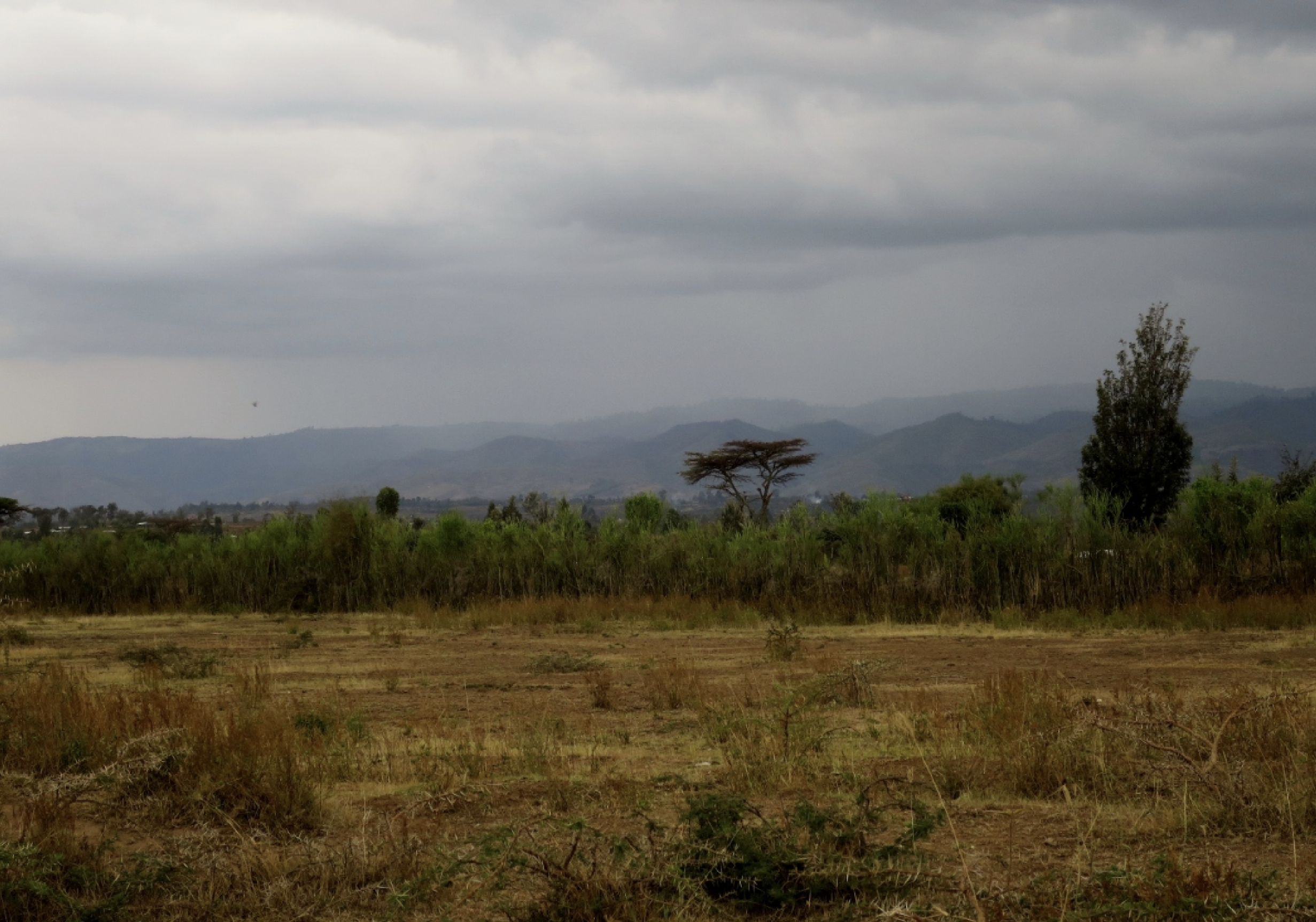Journey to Kenya
January 26, 2023
Around the world, many areas that are rich in biodiversity are also areas where human populations place heavy pressures on the natural world. Community conservation recognizes the need to develop solutions that protect wildlife and their habitats while simultaneously supporting sustainable income generation for people.
Join us on a journey to Kenya to learn more about how the Wilder Institute is protecting mountain bongo and empowering local communities.
Welcome to Kenya!
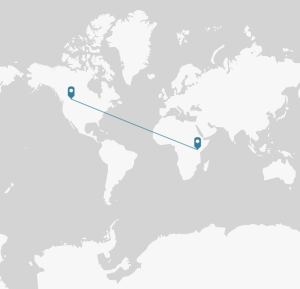
The Wilder Institute is working in multiple mountain forests in Kenya with our partners Rhino Ark and the Bongo Surveillance Project. Today, we want to share more about our work in Eburu Forest Reserve. The goals of our work in Eburu are to 1) monitor biodiversity in Eburu Forest (focusing on mountain bongo habitat) and 2) enable local communities to benefit from forest resources sustainably. Additionally, we are co-leading a group of organizations focused on taking steps for a mountain bongo reintroduction in select mountain forests in Kenya.
What is a Mountain Bongo?
Mountain bongo are a Critically Endangered subspecies of forest antelope found only in Kenya. There may be fewer than 100 mountain bongo left in the wild, living in four fragmented populations. As the human population of Kenya expands, these elusive and rare animals are increasingly threatened by human encroachment in the forests where they live. Conserving mountain bongo helps protect all the other species which share their highland forest home.
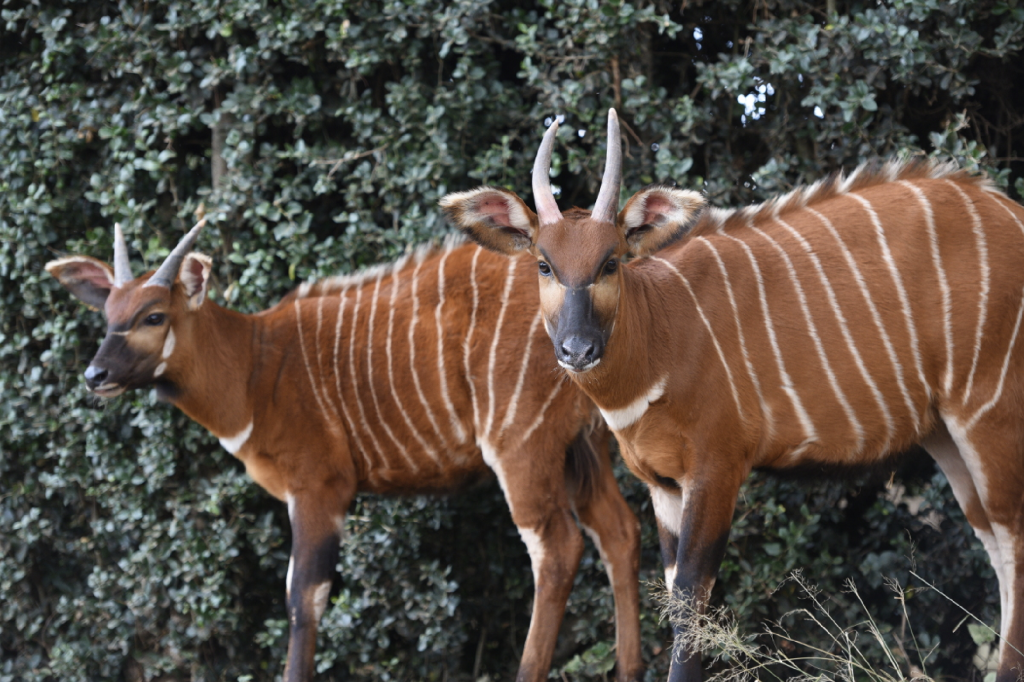 Photo – Mountain or Eastern bongo at Mt Kenya Wildlife Conservancy. Scientific name: Tragelaphus eurycerus isaaci
Photo – Mountain or Eastern bongo at Mt Kenya Wildlife Conservancy. Scientific name: Tragelaphus eurycerus isaaci
Mountain bongo have a chestnut brown coat marked with white vertical stripes and a crest of hair along their backs. Both male and female bongo have spiraled horns, which can grow up to a meter in length! Mountain bongo are crepuscular, which means they are most active at dawn and dusk. Lowland bongo is the other subspecies of bongo and is found in West Africa.
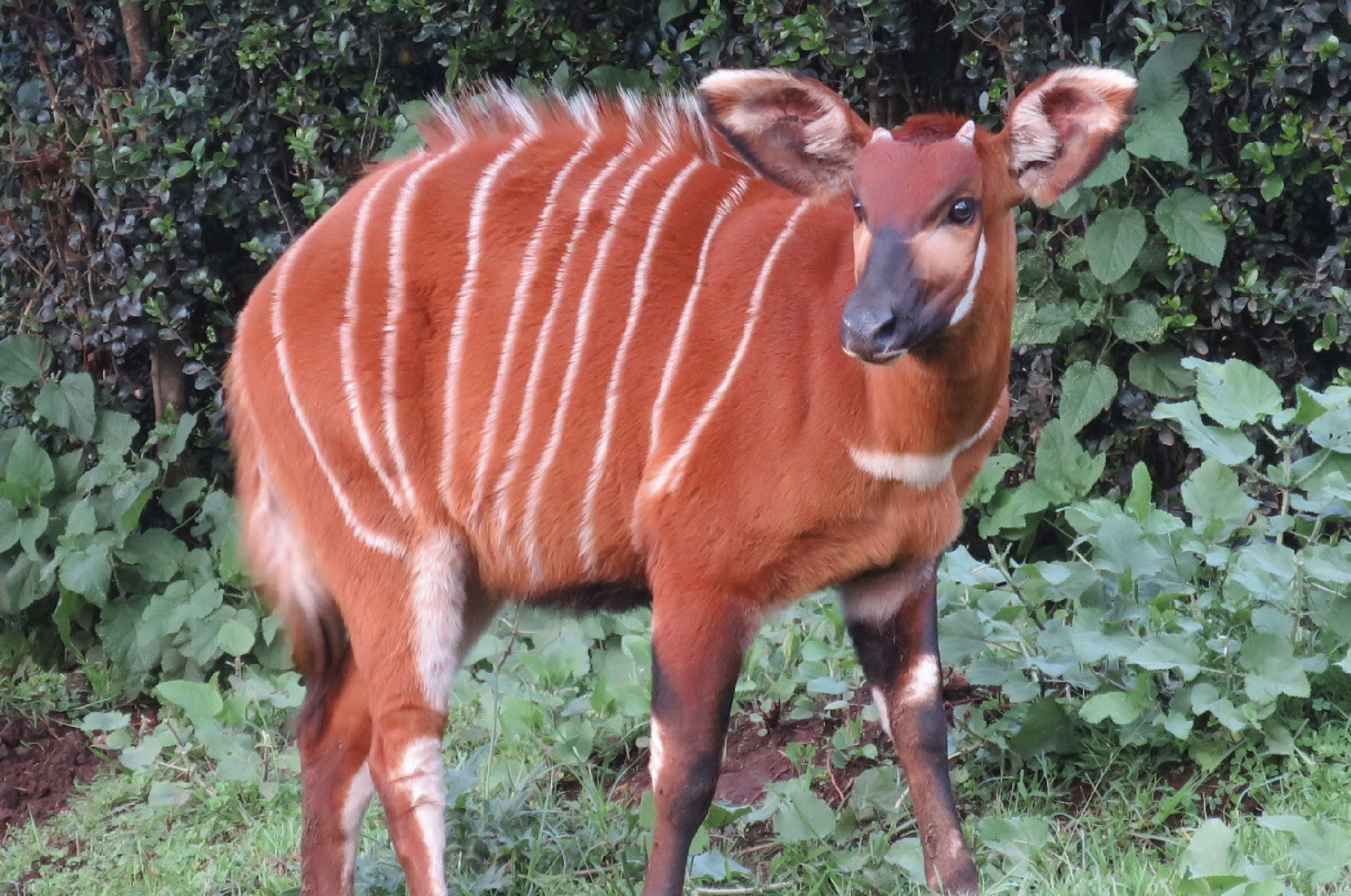
The Water Towers of Kenya
In the past, local people relied on the highland forests of Kenya for resources like building materials, medicinal plants, charcoal production, bush meat, and honey. Today, our understanding of the many ways that alpine forests provide for local people has expanded. The mountain forests are called the water towers of Kenya because they are a vital catchment area that provides water to 90% of the inhabitants of Nairobi and beyond. These forests also provide many ecosystem services, including climate regulation, flood mitigation, nutrient cycling, and carbon storage.
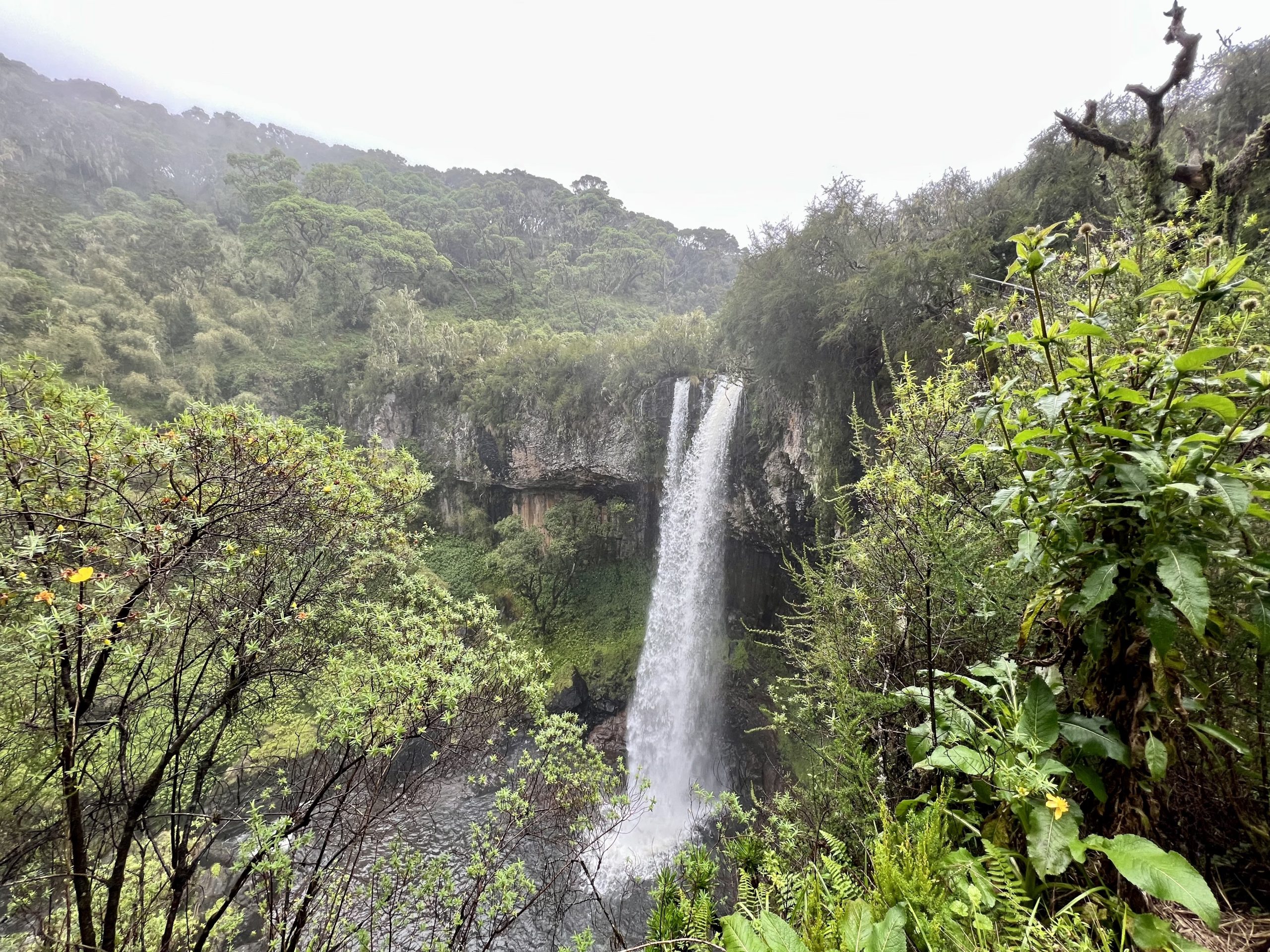
In addition to providing resources for humans, the mountain forests are home to incredible biodiversity, including many threatened species such as leopard, black rhino, and elephant. Co-existence between wildlife and local people living near the mountain forests can be a challenge. Crop raiding negatively impacts farmers and wildlife encounters can pose a risk to local people. Unsustainable use of forest resources including, bush meat hunting, charcoal burning and illegal foresting degrades habitat and threatens biodiversity, including mountain bongo.
Below, we’ll explore the four highland forests where mountain bongo live.
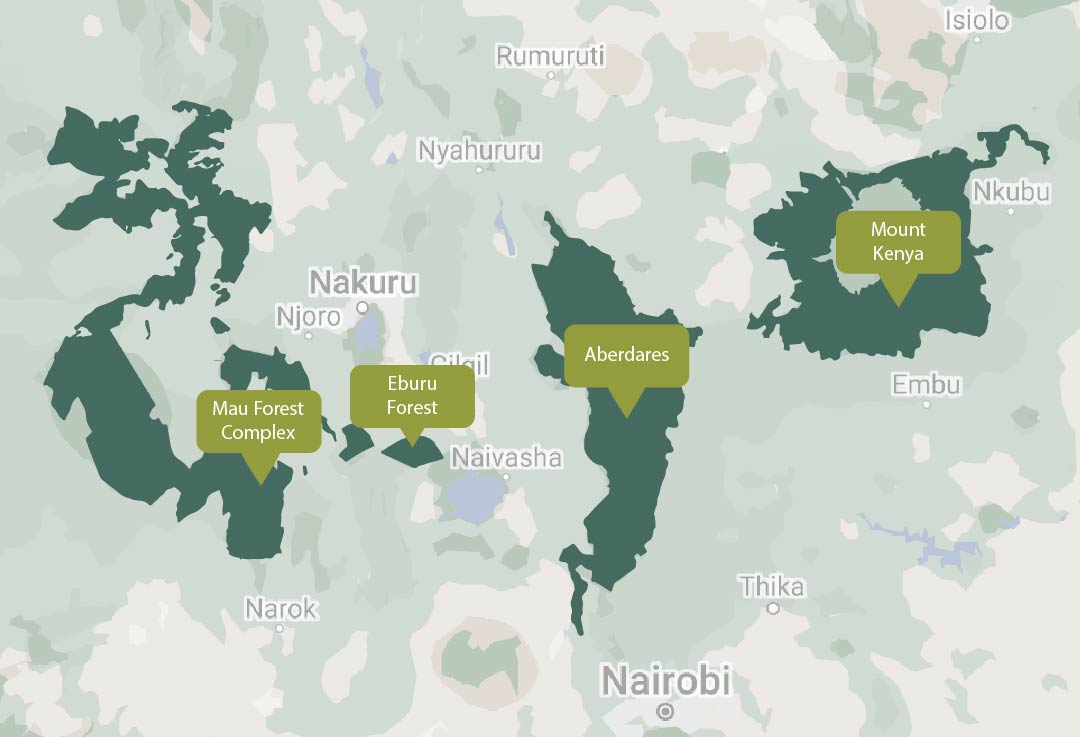
1. Mount Kenya
Mount Kenya is the second-highest mountain in Africa. Its forests host a wide variety of threatened species including elephants, black rhino, and leopards. Our partner Rhino Ark is working to construct an electric fence around Mount Kenya to protect people from wildlife and prevent human intrusions in the forest. This forest is home to less than 20 mountain bongo.
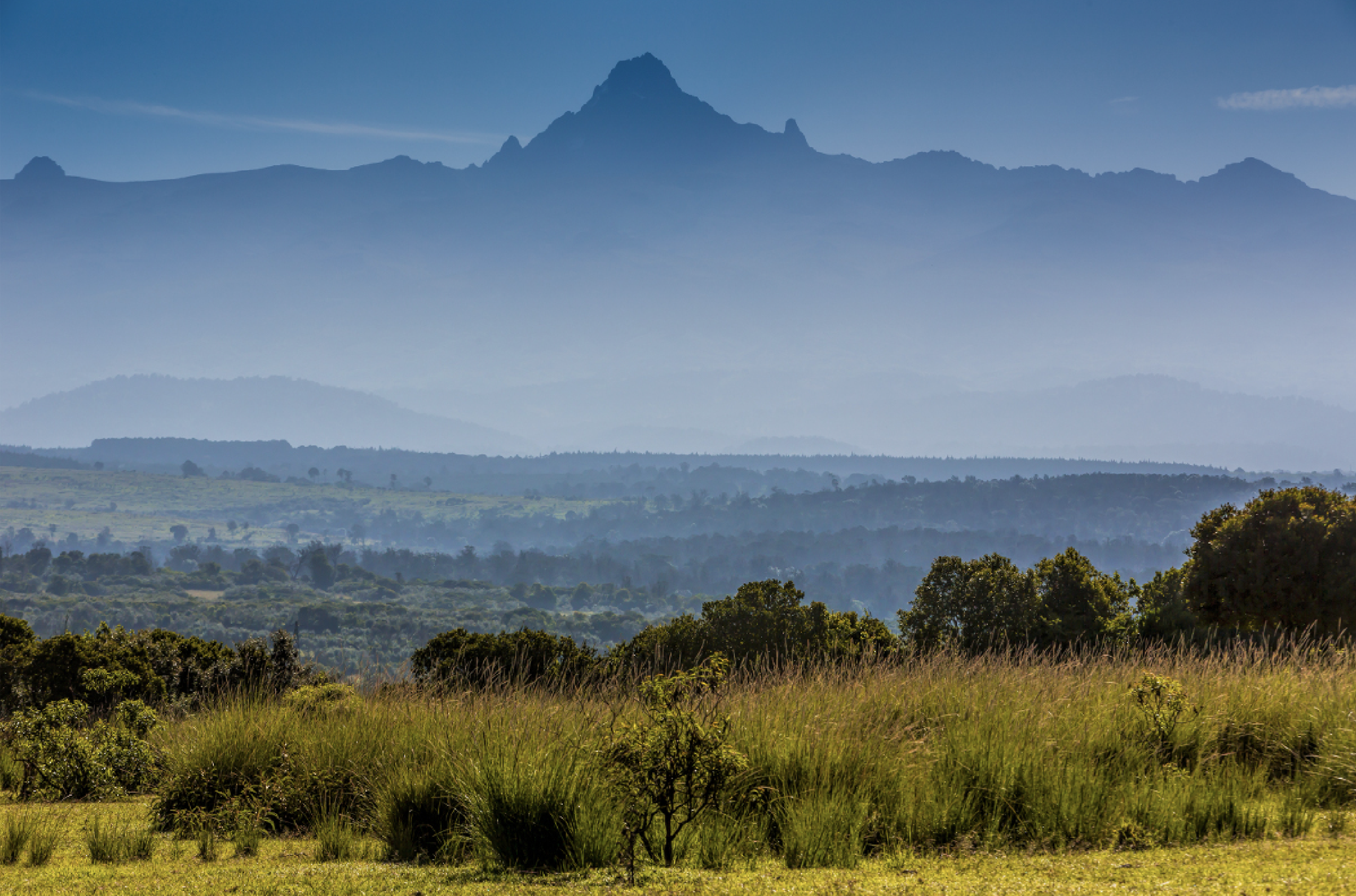
2. Aberdares
Four of seven of Kenya’s largest rivers originate in the Aberdares. An electric fence over 400 km long constructed by Rhino Ark surrounds the Aberdare Conservation Area. Fencing has increased forest cover and reduced intrusions in the forest while also improving the livelihoods of local people by increasing crop yields. Today, the largest population of about 50 mountain bongo live in the Aberdares.
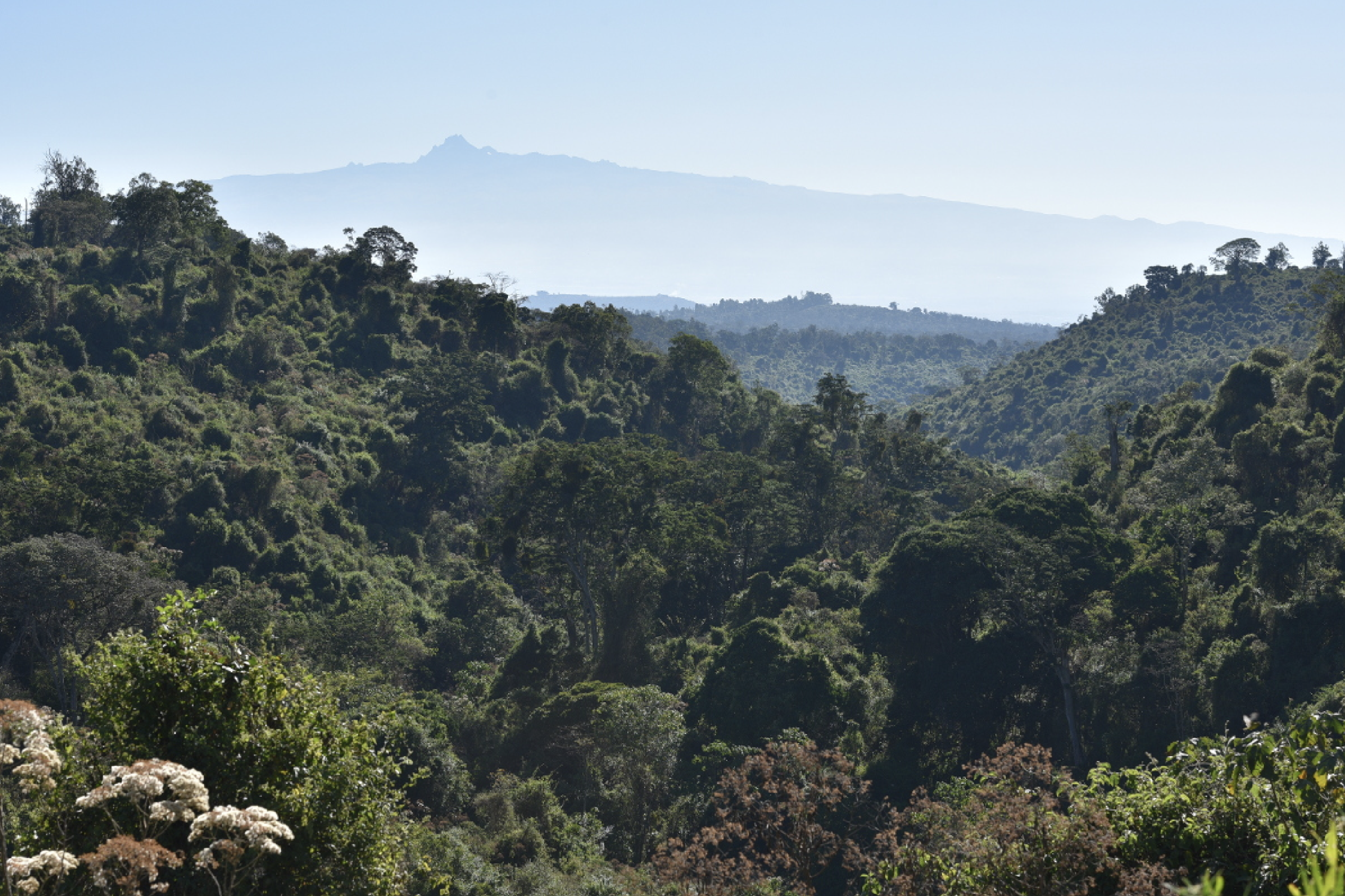
3. Mau Forest Complex
The Mau Complex is a critical water catchment area consisting of diverse indigenous forest types and is the home of indigenous forest dwelling communities (the Ogiek). The highland forest is also home to leopard, African golden cat, and elephant. The forest is challenged by insecurities due to illegal forest incursions for logging and cattle grazing. It’s believed that the Mau Forest Complex is home to less than 20 mountain bongo.
4. Eburu Forest Reserve
Eburu Forest Reserve, once connected to the Mau Forest Complex, is now an island of highland forest completely surrounded by farmland. Illegal logging, poaching, and charcoal production are on-going challenges in this area. In 2014, Rhino Ark completed the construction of a 43 km electric conservation fence around the forest. We believe there are less than 10 mountain bongo living here.
Our Work in Eburu Forest Reserve
The Wilder Institute works together with our partners Rhino Ark and the Bongo Surveillance Project in Eburu Forest Reserve.
Since 2015, Donna Sheppard, our Community Conservation Specialist, has lived in Kenya. Donna’s role is to build relationships with the community and implement science-driven conservation solutions that are appropriate for the local context.
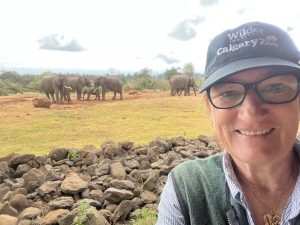
“The goals of my work are to enable local people to engage sustainably and economically with the natural world – to make conservation pay for itself.” Donna Sheppard, Community Conservation Specialist
Monitoring Biodiversity
In 2019 Donna and the Bongo Surveillance Program trackers completed a two-year remote camera study in Eburu Forest. 50 Remote cameras were placed within the forest boundaries, marked with the orange line.
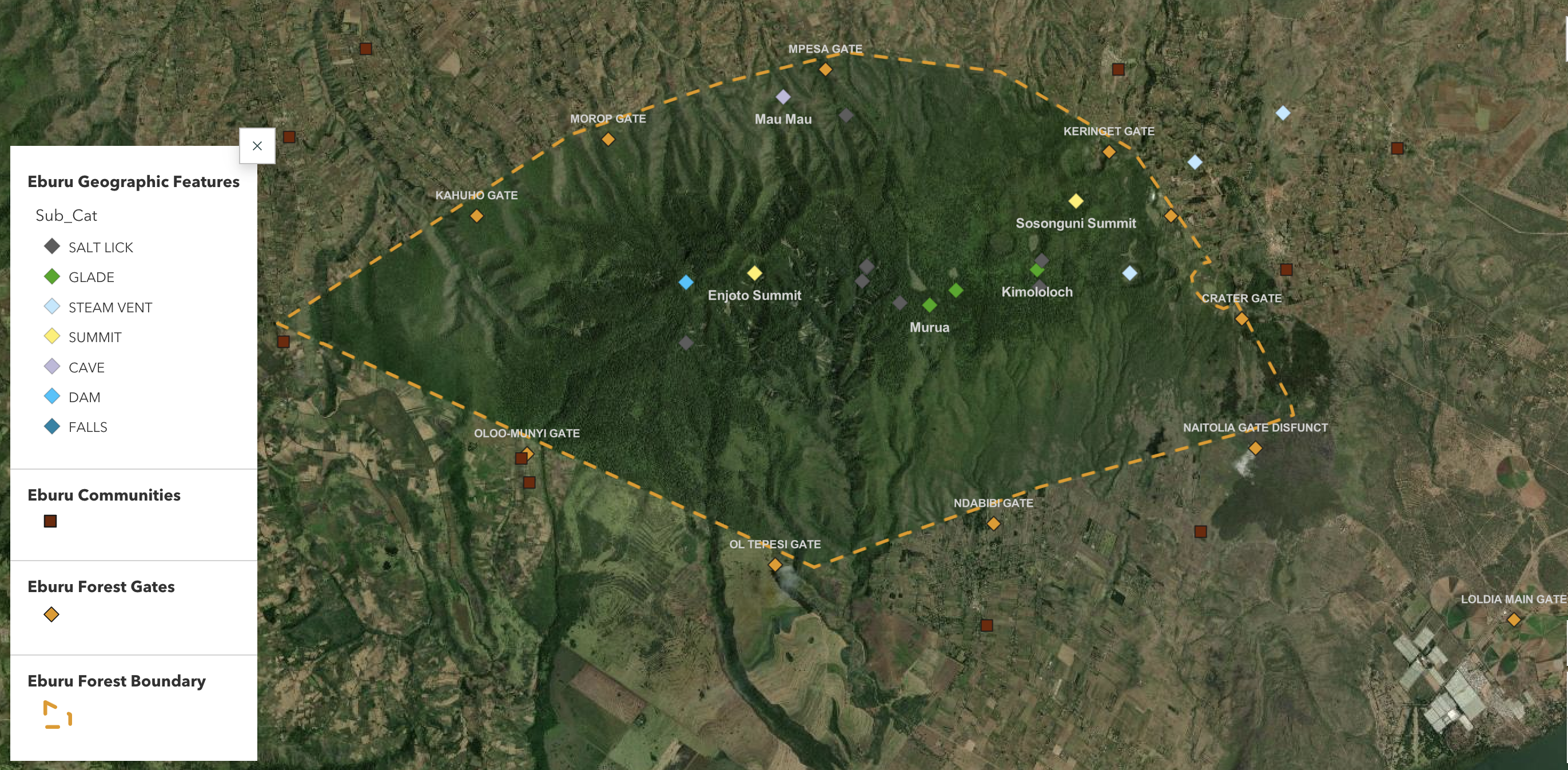
The main objective of the camera trapping study was to gather information about mountain bongo in the forest. Our efforts have also revealed important insights about other species that share the mountain bongos habitat and illegal activities that are an ongoing challenge in the forest.
Navigating the steep, slippery slopes and deep valleys of the forest is certainly not for the faint of heart. The camera trapping team travels with two armed guards from the Kenya Forest Service to protect them from Cape Buffalo and other dangerous wildlife.
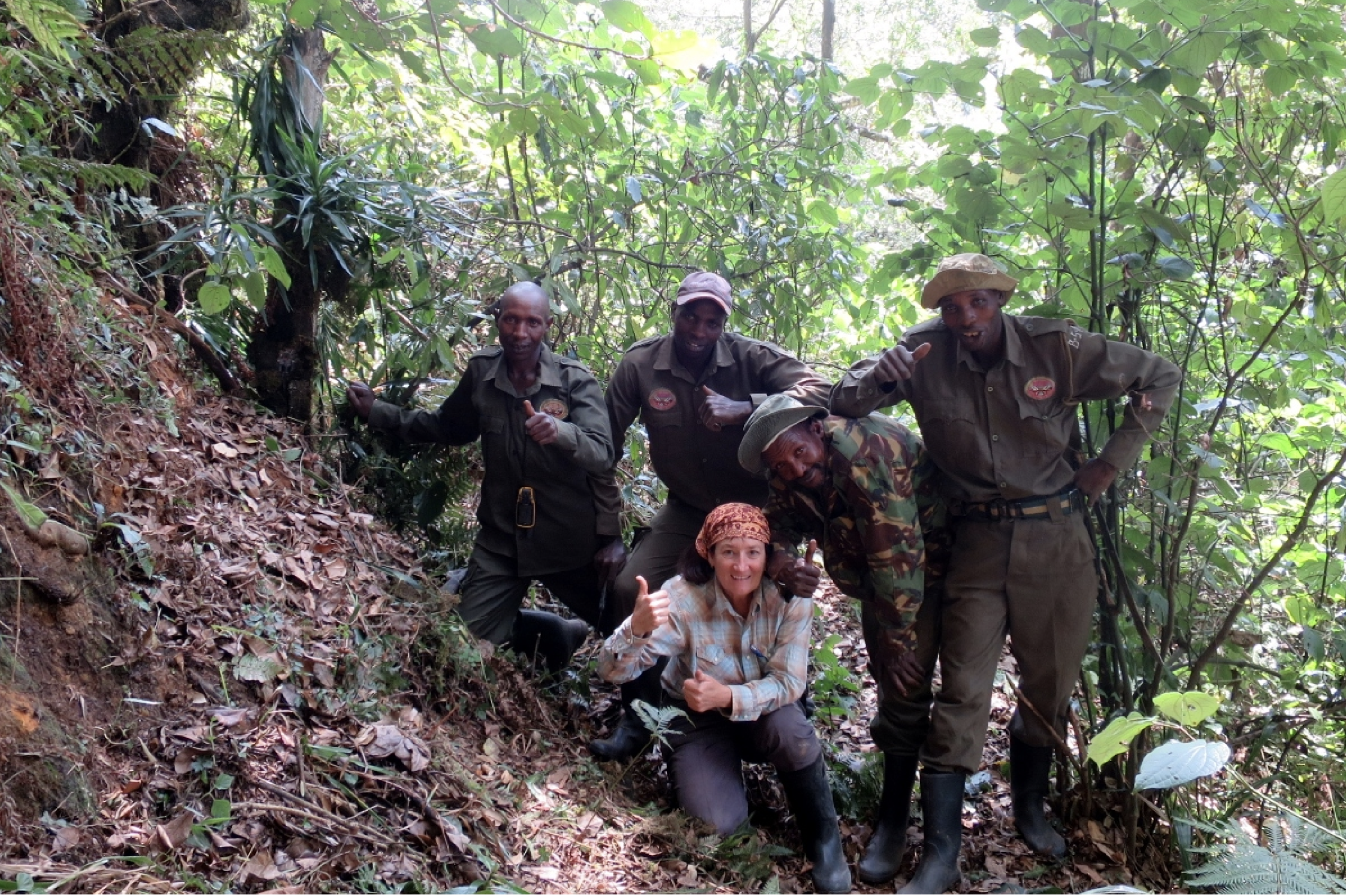
The presence of the trackers and guards in the forest helps deter would-be poachers and others engaging in illegal activities in the forest.
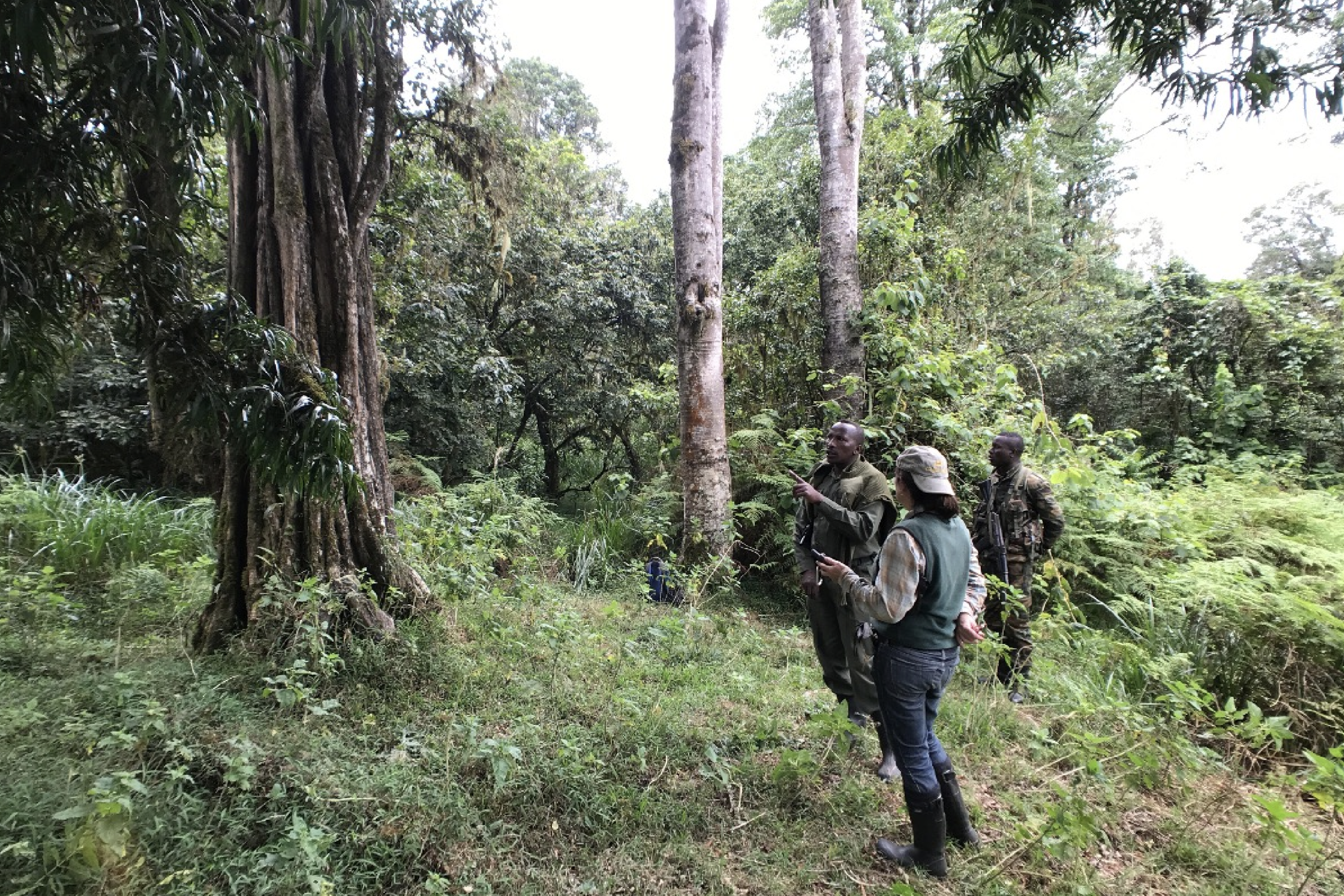
Which Species Did We Find in Eburu Forest?
We collected 180,000 images of wildlife as part of the study. There are many species using the forest. Take a look at some of Kenya’s forest species below.
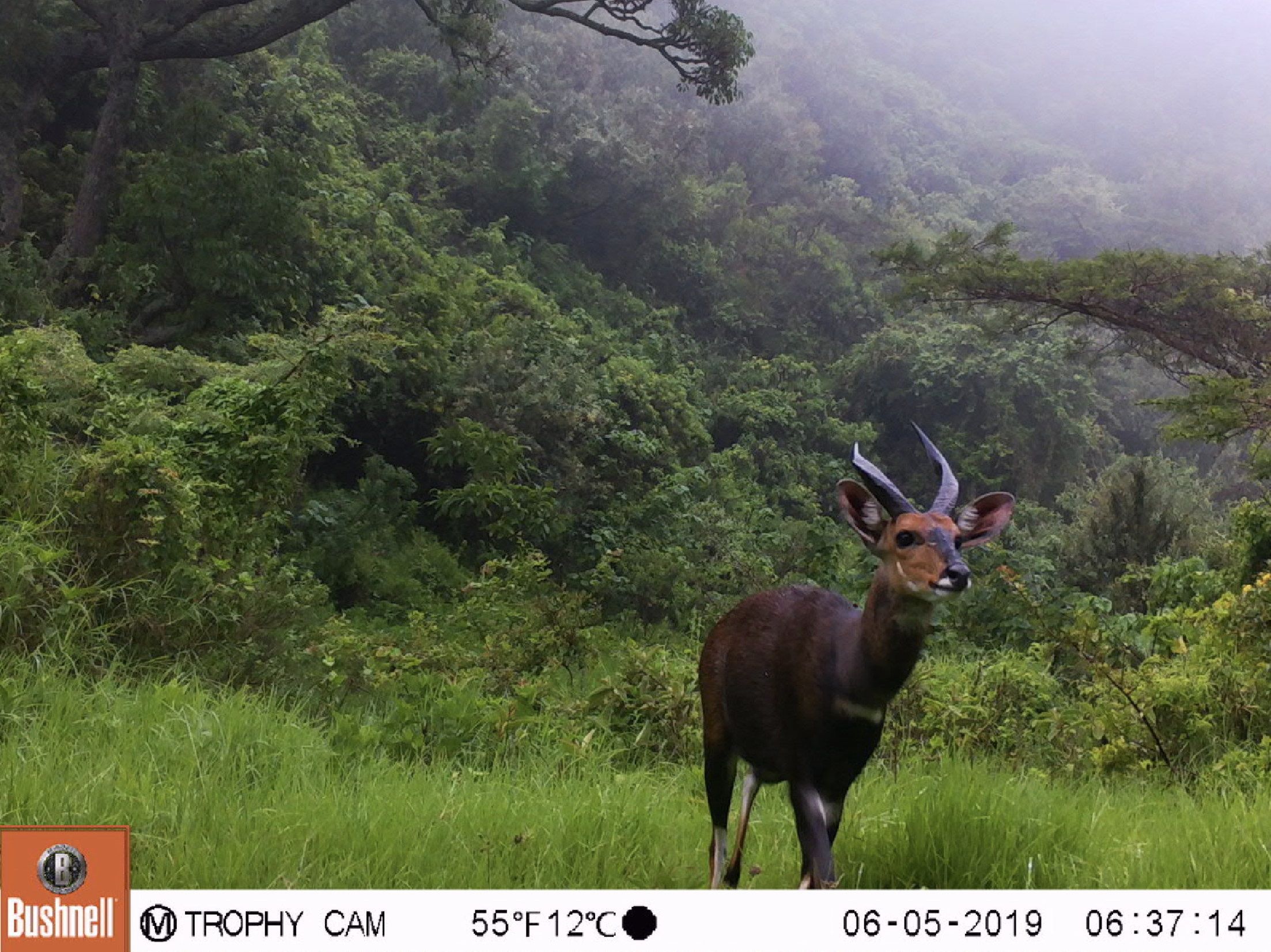 Bushbuck |
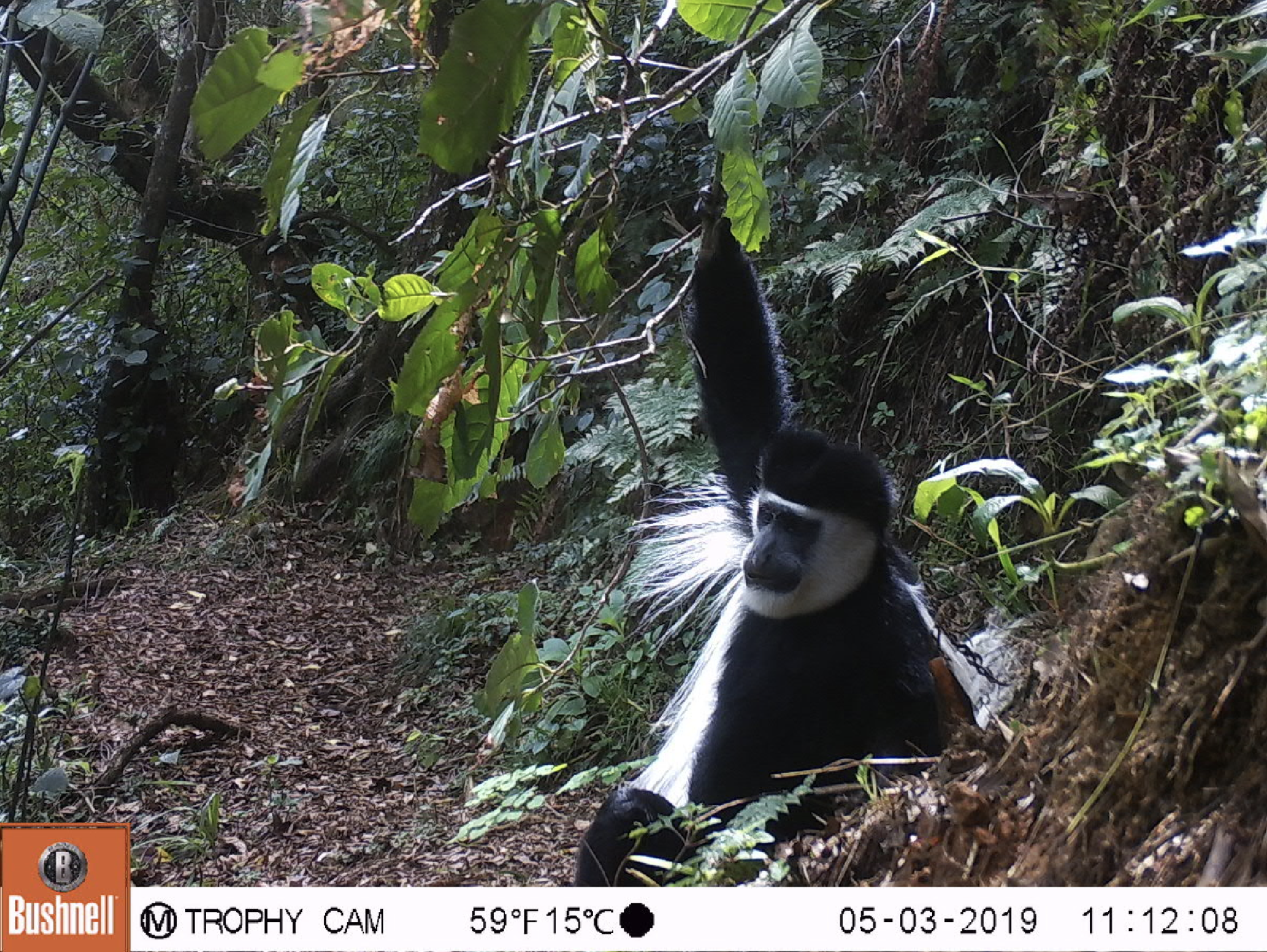 Black and white colubus |
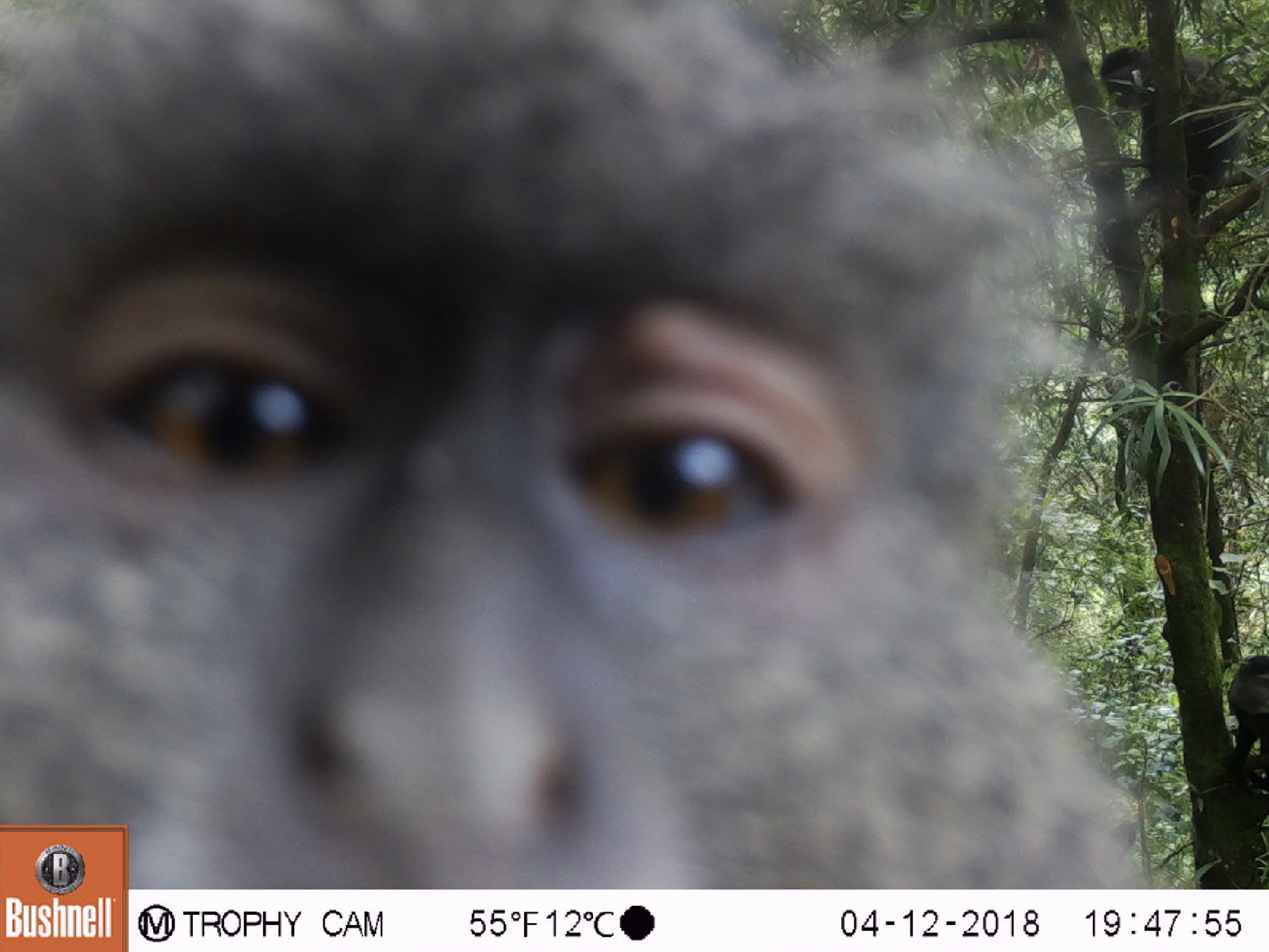 Blue monkey |
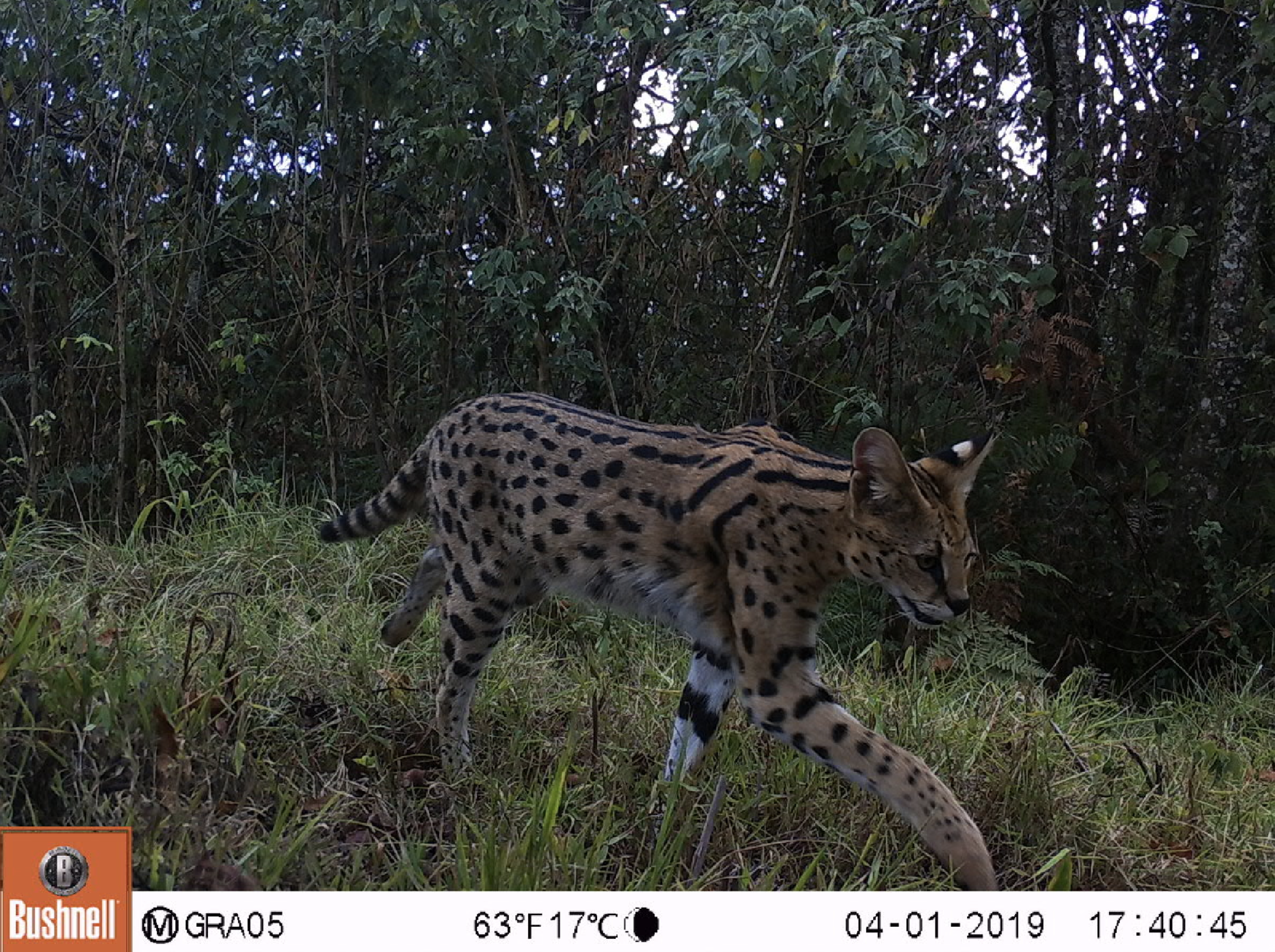 Serval |
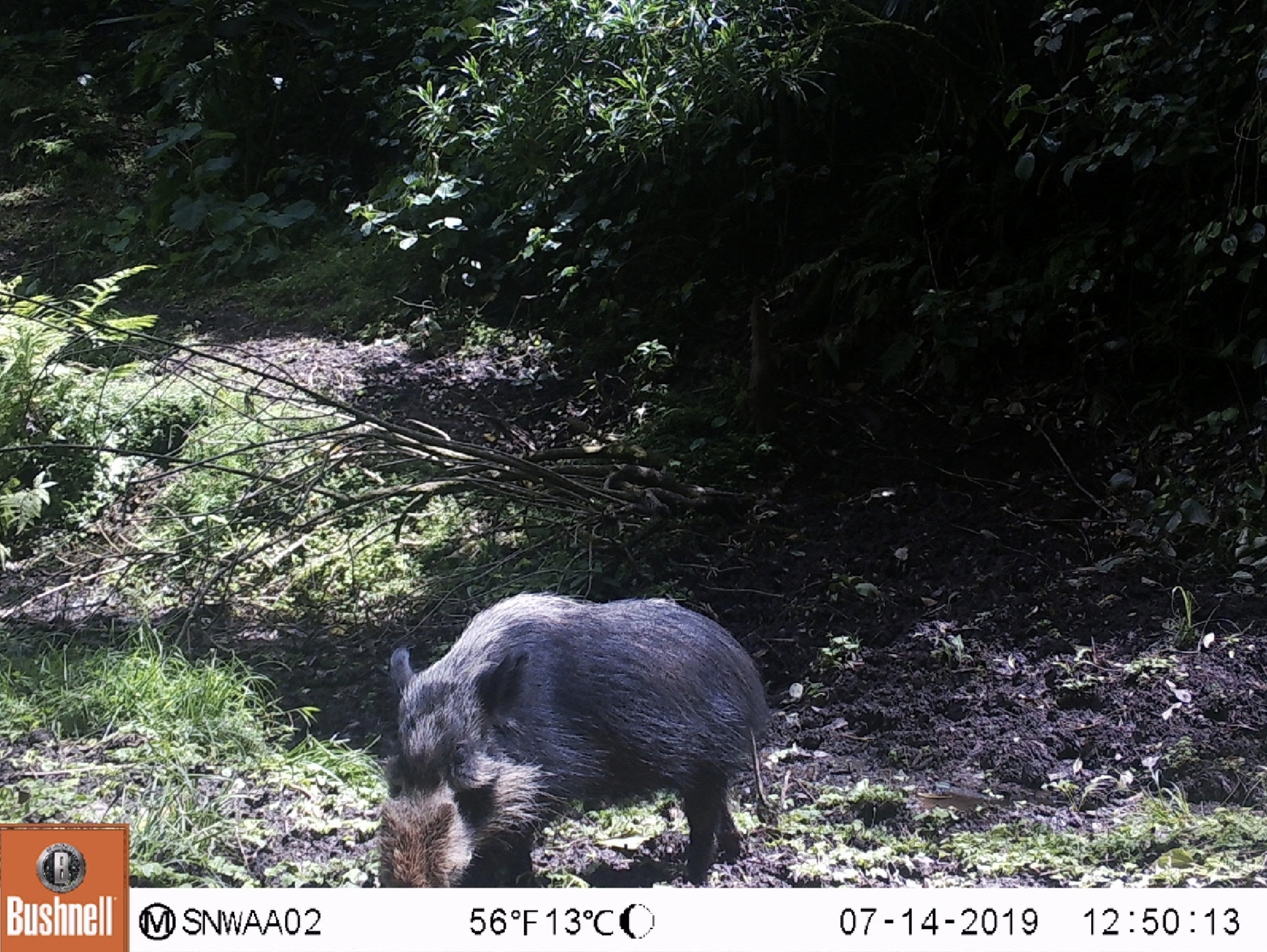 Bush pig |
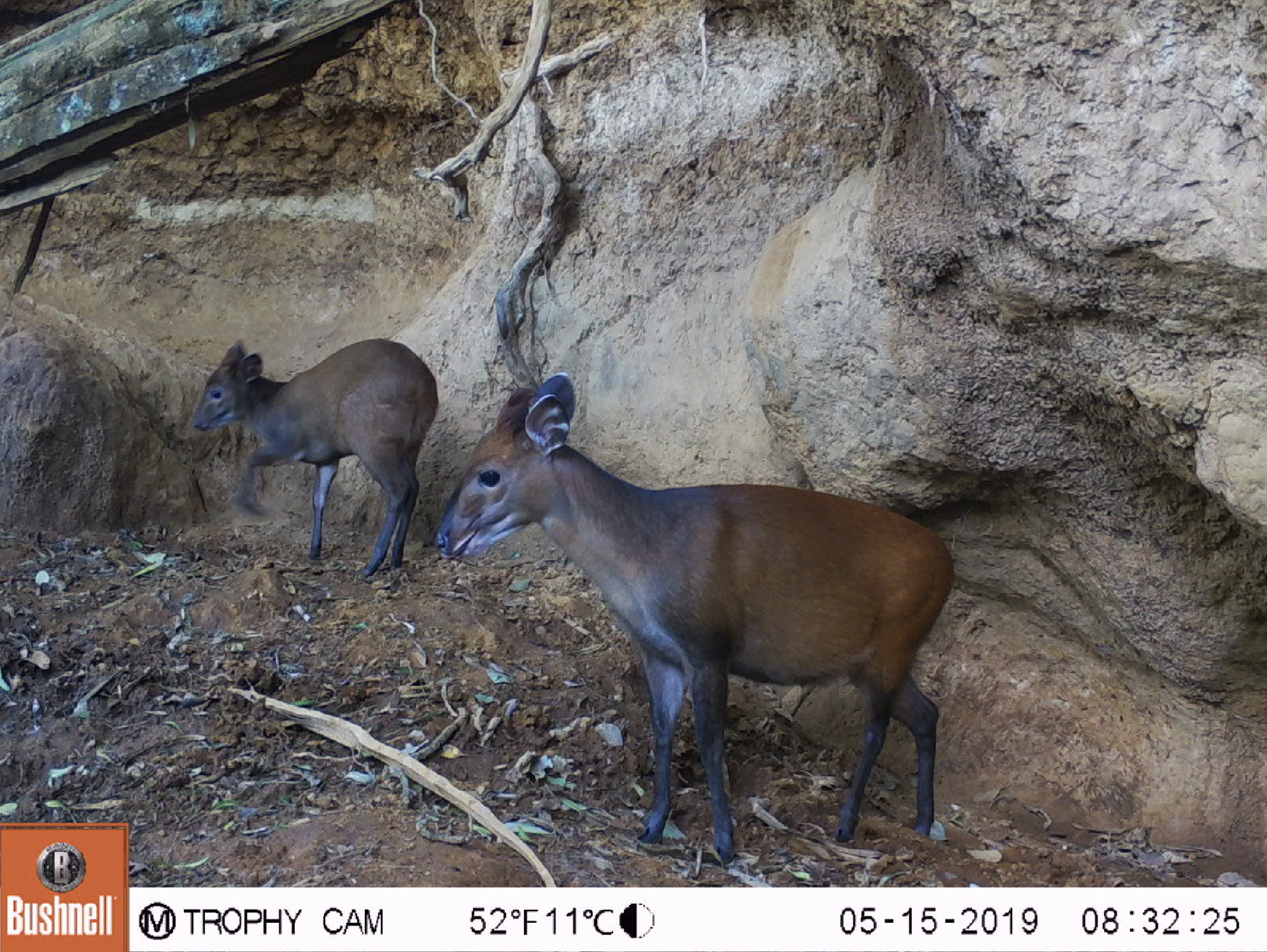 Red duiker |
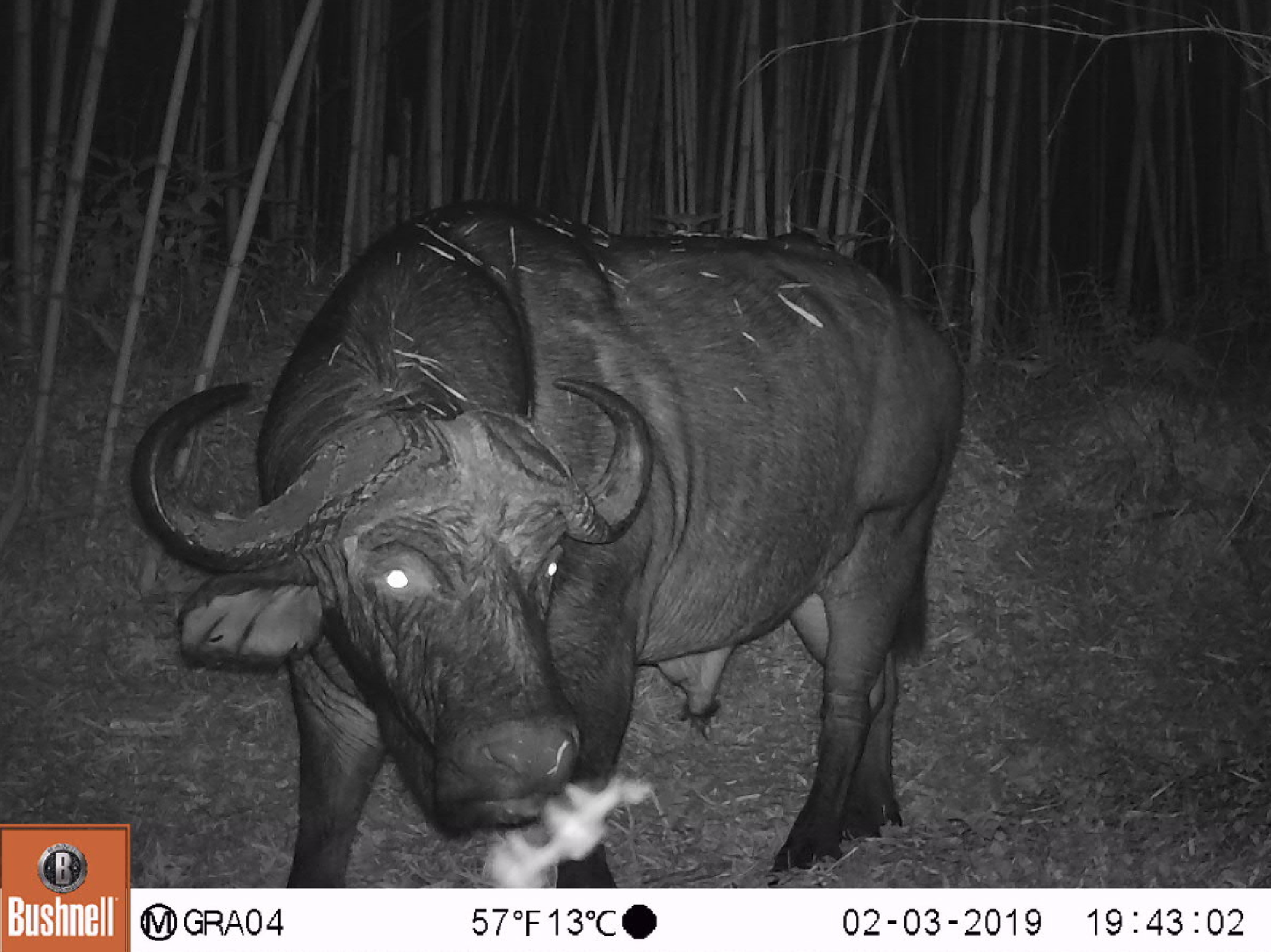 Cape buffalo |
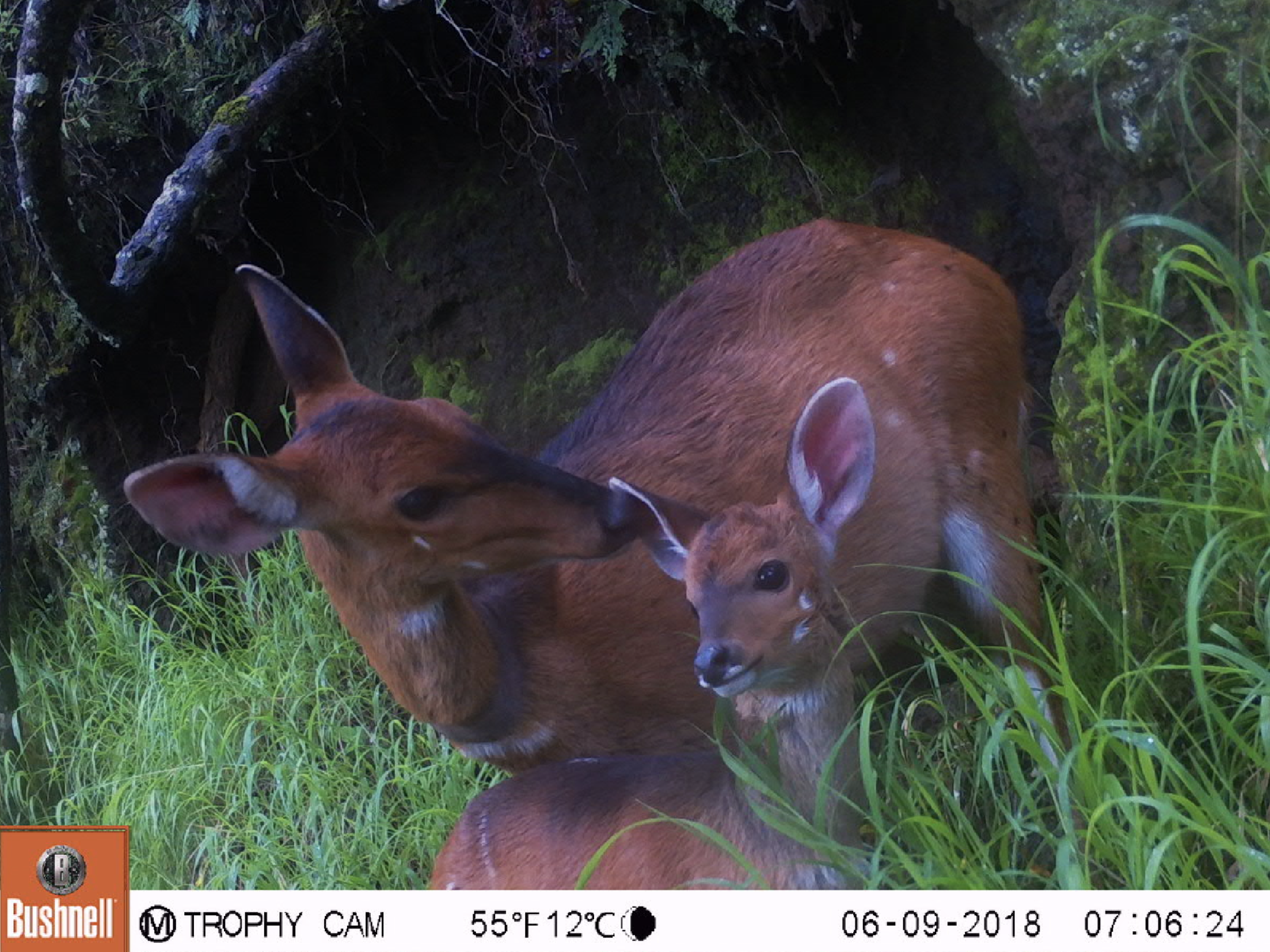 Bushbuck |
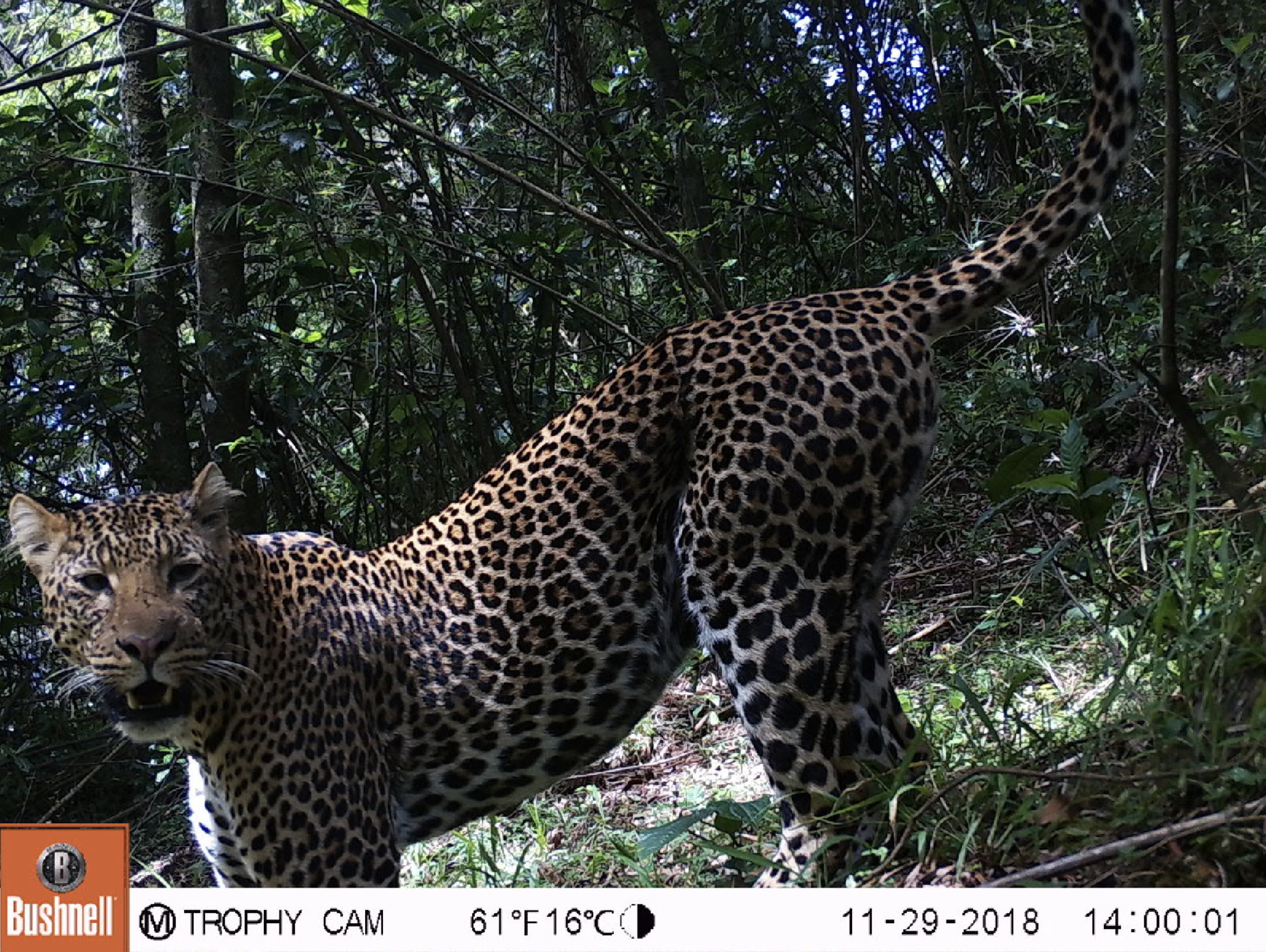 Leopard |
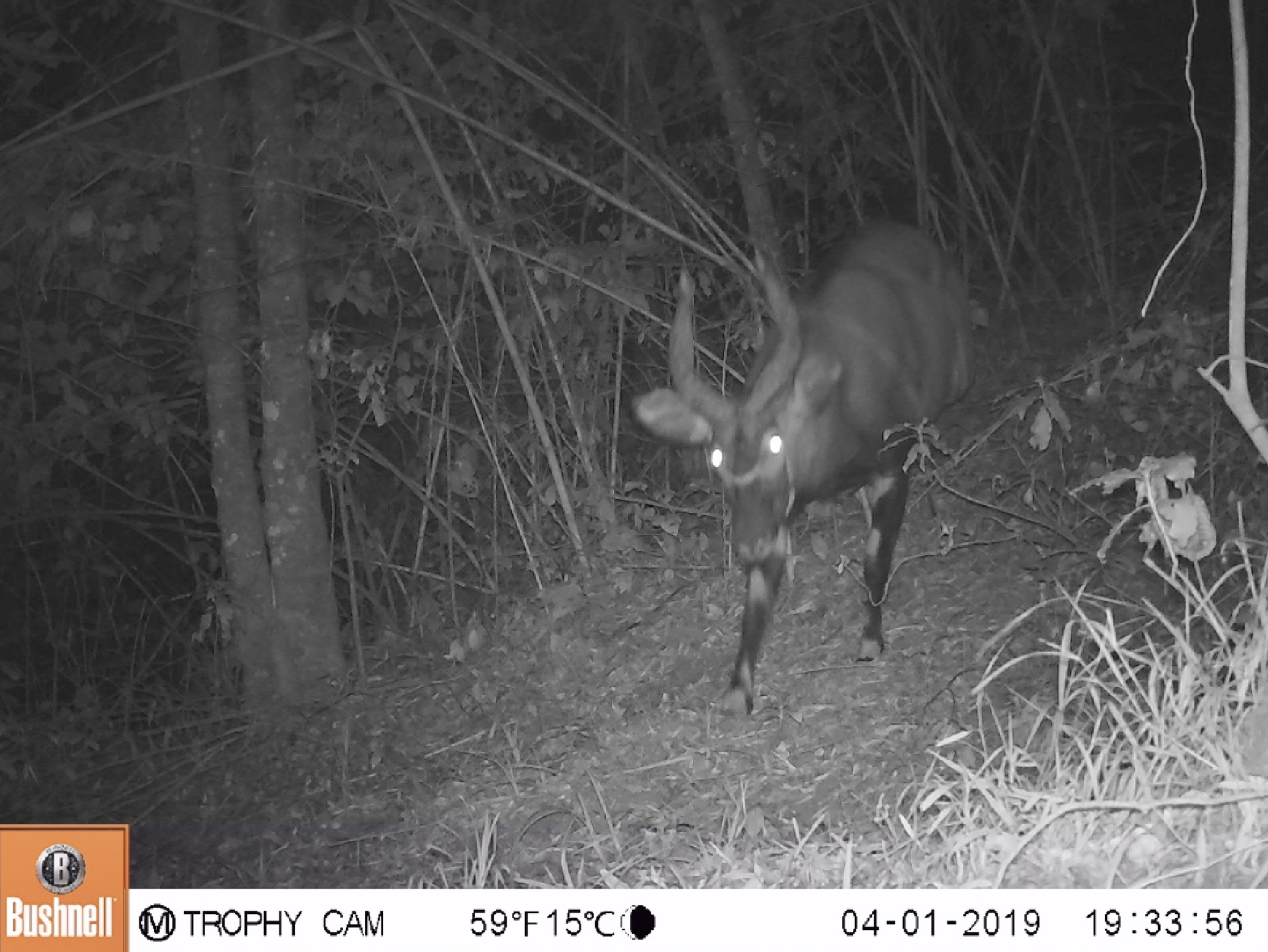 Mountain bongo! |
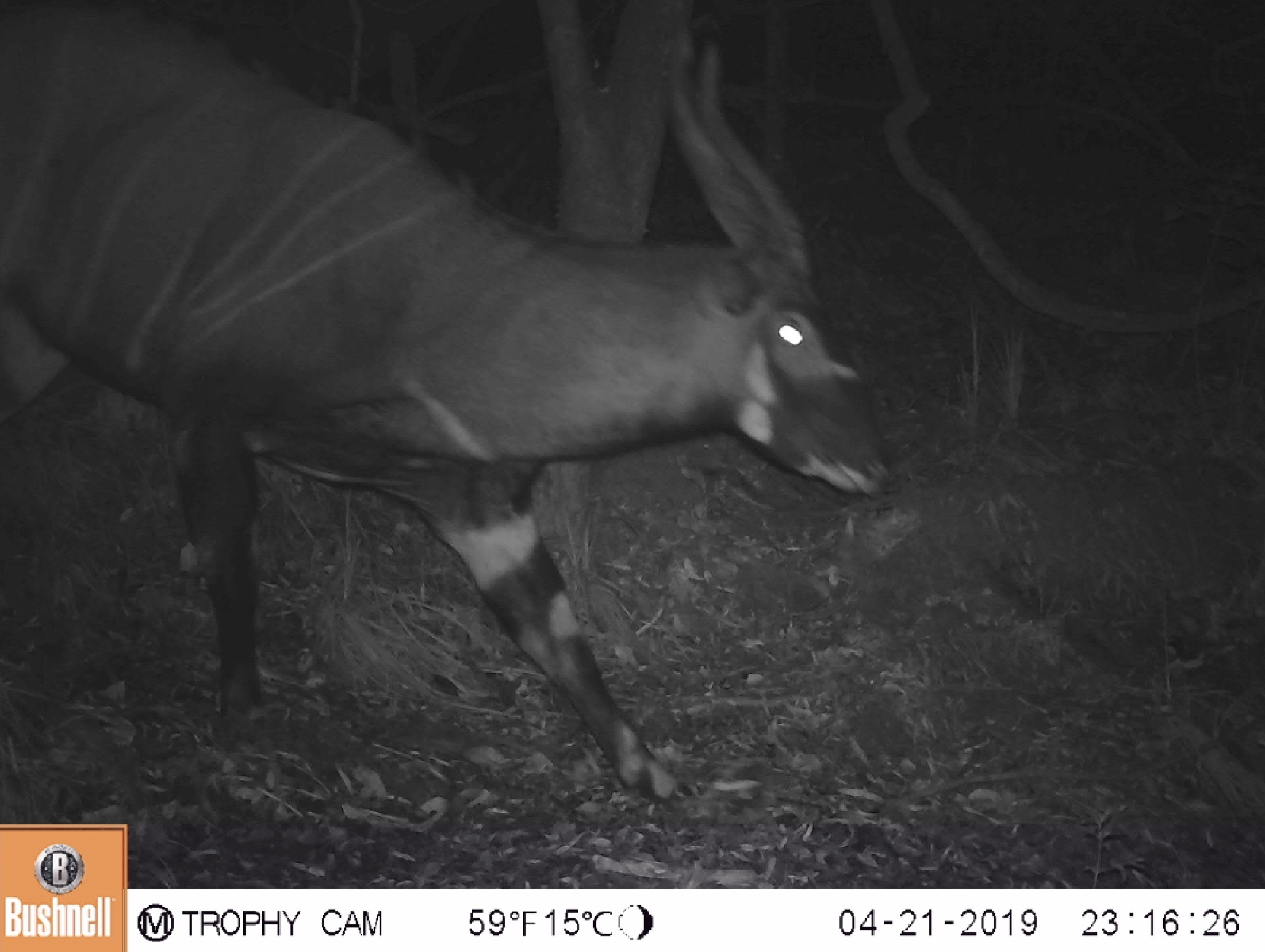 Mountain bongo! |
Understanding Human Connections with the Forest
In addition to biological fieldwork, we conducted interviews in the households surrounding Eburu Forest Reserve. The brown squares on the maps are the community centres.

These interviews help us understand the relationship of local people with the forest, their conservation attitudes and socio-economic needs. This research will help identify win-win scenarios for people and nature.
Promoting Sustainable Livelihoods
The Wilder Institute has worked to reinvigorate the Eburu Forest Community Forest Association (CFA). The CFA is Kenya’s mechanism for regulating access to protected forests and sustainable use of their resources by local communities.
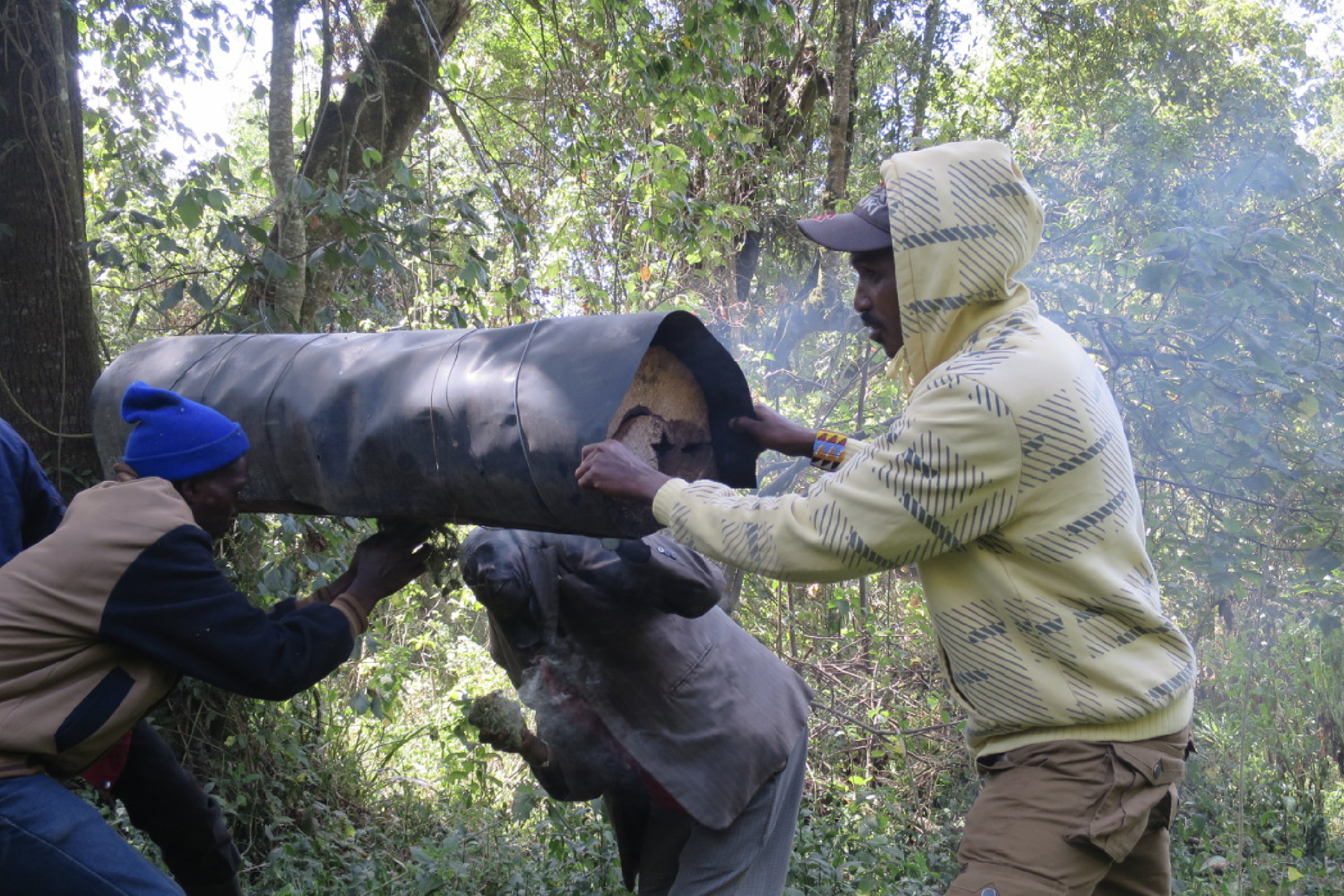
Individuals and groups that are registered with the CFA are able to access the forest for honey harvesting, ecotourism, grass harvesting, herb collection, research and forest operations, including trail maintenance, water projects, tree planting and maintenance.
Beekeeping
There are many beekeeping groups & individuals harvesting honey in and around the forest and selling it locally. The Wilder Institute worked to survey and record the location of existing honey hives.
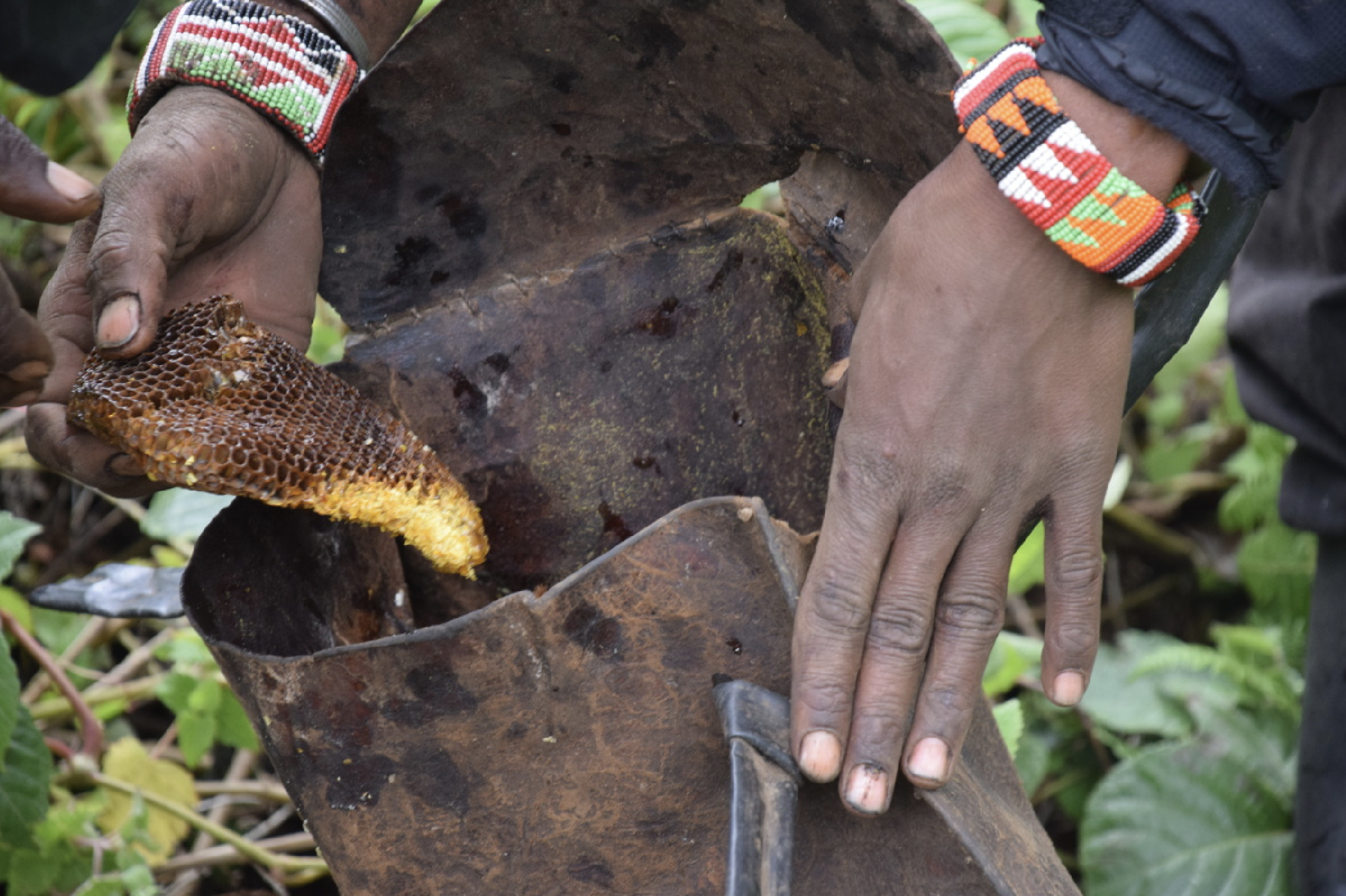
Following this research, we worked with stakeholders to create the Eburu Natural Forest Honey Cooperative—which now has 59 members— bringing all these groups under one umbrella. The cooperative is a tool to add value to what those involved in the beekeeping and honey industry in Eburu are already doing. It will help to increase production by supporting with training and workshops, facilitating knowledge sharing and helping to market the honey to customers. By enabling legal and sustainable income-generating activities, we hope to reduce illegal activities in the forest.
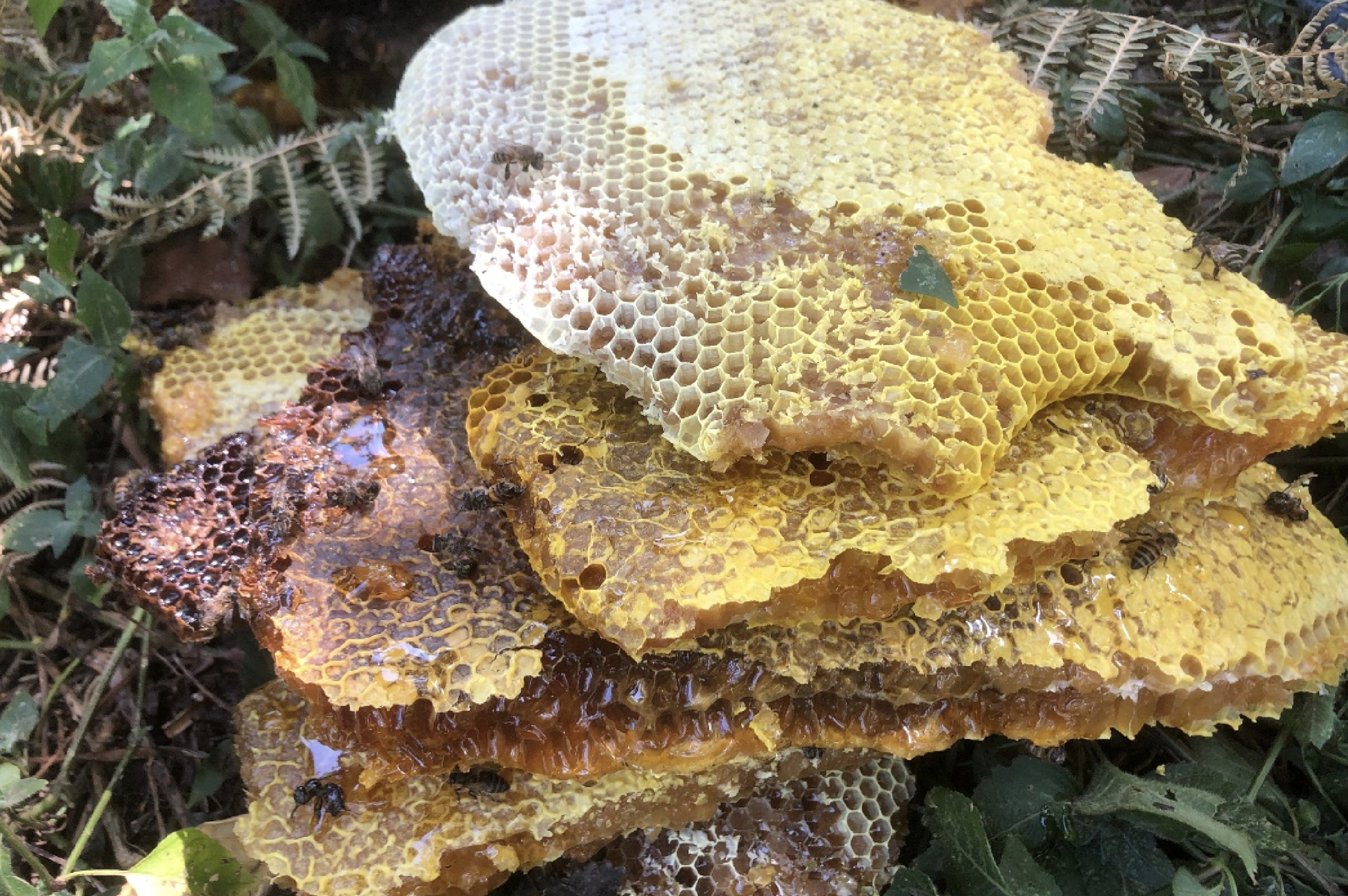
Thanks for joining us on this journey through Kenya! We hope that by working together we can keep the unique mountain bongo persisting in its forest habitat for all to enjoy.
What else is happening in the world of wildlife conservation?

